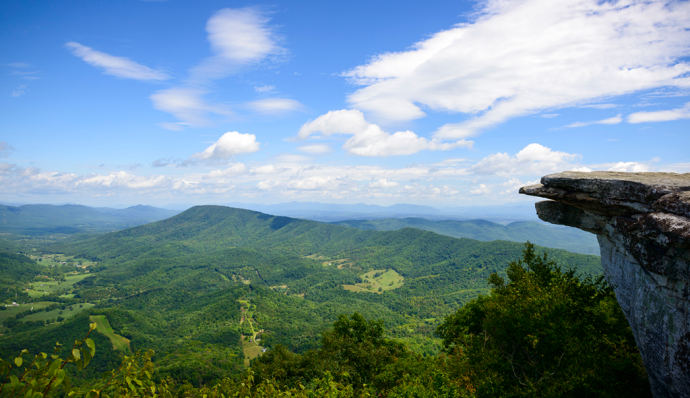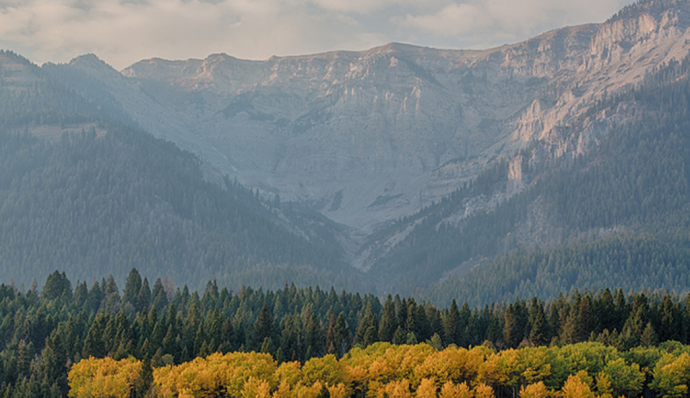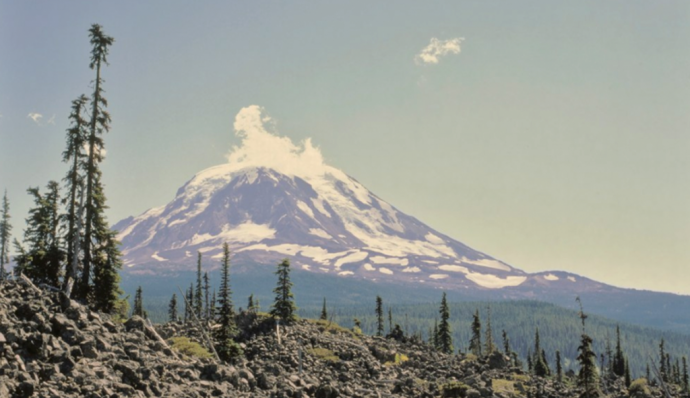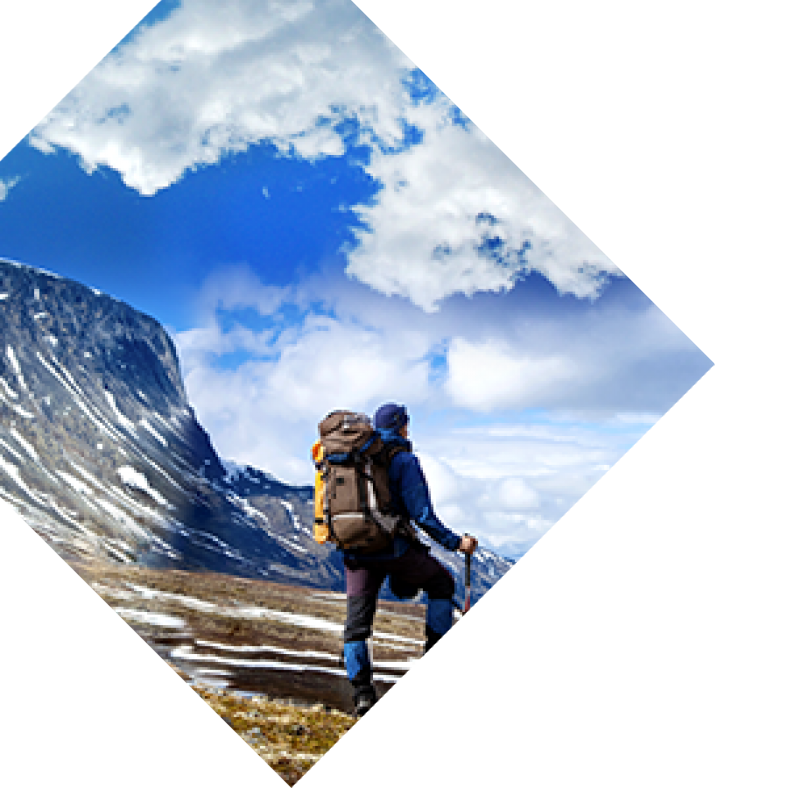Some of us like to hike, while others prefer a deeper wilderness experience with backpacking. But then there is a small contingent of folks who don’t want to stop at a couple of nights in the woods. Instead, these long-distance hikers want to hike every day and sleep in a tent every single night, covering thousands of miles by foot on some of the country’s most arduous trails. These people are known as thru-hikers, and they participate in what is now called thru-hiking. Does that pique your interest? If you think you’ve got what it takes to tackle six months on the trail, then read on for more details on thru-hiking.
What is a thru-hike?
 By definition, thru-hiking is trekking a long-distance trail end-to-end within one season. In the United States, there are a few popular long trails that are well known in the thru-hiking community. Some of these trails include the following:
By definition, thru-hiking is trekking a long-distance trail end-to-end within one season. In the United States, there are a few popular long trails that are well known in the thru-hiking community. Some of these trails include the following:
- The Appalachian Trail. Generally referred to as the AT in the thru-hiking community, this long trail is 2,200 miles that stretches along the east coast from Springer Mountain in Georgia to Mt. Katahdin in Maine. Over 3,000 hikers registered to thru-hike the AT in 2016, so maintenance on the trail is incredibly important. The trail is managed in partnership with the US Forest Service, US National Park Service, and the nonprofit Appalachian Trail Conservancy. On average, it takes five to seven months to thru-hike the AT.
- The Pacific Crest Trail. Commonly referred to as the PCT, this long trail is 2,659 miles. It reaches from the USA/Mexico border in Campo, California, to the south to the edge of Manning Park in British Columbia on the USA/Canadian border. Variety reigns supreme on the PCT: it wanders through 7 national parks and 25 national forests, and reaches elevations as low as sea level and as high as 13,153 feet at Forester Pass in the Sierra Nevada. This thru-hike was made popular by the book and subsequent movie Wild.
- The Continental Divide Trail. The CDT covers 3,100 miles of trail between Mexico and Canada, following along the Continental Divide in the USA. It runs through Montana, Idaho, Wyoming, Colorado, and New Mexico. To date, the CDT is considered to be 70% completed. The uncompleted sections mean that hikers will walk on portions of dirt or paved roads.
These three long-haul treks form what is now called the Triple Crown of thru-hiking.
Thru-hiking preparation
 Now that you understand what thru-hiking is, are you still interested? If so, tackle your next challenge: the thru-hiking prep work. Preparing for a thru-hike is unlike preparing for a day hike or even a backpacking trip. You’re preparing your body—mentally and physically—for thousands of grueling miles. Additionally, you need to prepare your gear and food stashes. After all, you can’t carry seven months of food in your backpacking, right? Before you even consider your gear and food, mentally think through the standard pitfalls that routinely take down the average thru-hiker. Per the Appalachian Trail Conservancy, only one in four thru-hikers actually completes their thru-hike of the AT. Why such a low number? There are a lot of reasons. Some hikers head into their long-distance hike with unrealistic expectations. Hiking day after day is mentally and physically grueling. If you aren’t prepared for that test of endurance, you will suffer. Mental fatigue is very real; you will need staunch mental fortitude to endure those moments of physical pain and suffering. Running out of money is another realistic factor that causes many hikers to not finish. You won’t be working while hiking, so saving accordingly and budgeting during your hike are crucial components. The Appalachian Trail Conservancy estimates that average hikers will still spend $1000/month during their hike; frugal hikers who forgo luxuries like the occasional hotel will spend less. Carefully planning your finances ahead of time is a great way to aid in your thru-hiking success.
Now that you understand what thru-hiking is, are you still interested? If so, tackle your next challenge: the thru-hiking prep work. Preparing for a thru-hike is unlike preparing for a day hike or even a backpacking trip. You’re preparing your body—mentally and physically—for thousands of grueling miles. Additionally, you need to prepare your gear and food stashes. After all, you can’t carry seven months of food in your backpacking, right? Before you even consider your gear and food, mentally think through the standard pitfalls that routinely take down the average thru-hiker. Per the Appalachian Trail Conservancy, only one in four thru-hikers actually completes their thru-hike of the AT. Why such a low number? There are a lot of reasons. Some hikers head into their long-distance hike with unrealistic expectations. Hiking day after day is mentally and physically grueling. If you aren’t prepared for that test of endurance, you will suffer. Mental fatigue is very real; you will need staunch mental fortitude to endure those moments of physical pain and suffering. Running out of money is another realistic factor that causes many hikers to not finish. You won’t be working while hiking, so saving accordingly and budgeting during your hike are crucial components. The Appalachian Trail Conservancy estimates that average hikers will still spend $1000/month during their hike; frugal hikers who forgo luxuries like the occasional hotel will spend less. Carefully planning your finances ahead of time is a great way to aid in your thru-hiking success.
Thru-hiking gear list
 Once you are mentally and financially prepared to tackle your hike, consider your gear. Obviously, you will need some outdoor gear to accomplish this goal! There is no set number, but many thru-hikers estimate that they spent upwards of $4,000 to acquire all of the needed gear. Of course, this number varies depending on how much gear you originally own. If you own essentials like a tent and sleeping bag, this initial outlay will be much cheaper. That said, what gear do you need for a thru-hike? Below is a general gear list that you will need for any thru-hike you tackle. Clothing & footwear
Once you are mentally and financially prepared to tackle your hike, consider your gear. Obviously, you will need some outdoor gear to accomplish this goal! There is no set number, but many thru-hikers estimate that they spent upwards of $4,000 to acquire all of the needed gear. Of course, this number varies depending on how much gear you originally own. If you own essentials like a tent and sleeping bag, this initial outlay will be much cheaper. That said, what gear do you need for a thru-hike? Below is a general gear list that you will need for any thru-hike you tackle. Clothing & footwear
- Wicking and quick-dry underwear and sports bra
- Long underwear
- T-shirt and long-sleeved shirt
- Hiking pants and/or shorts
- Insulating layer
- Waterproof/breathable shell and pants
- Bandana or neck gaiter
- Sun hat and winter beanie
- Gloves
- Hiking shoes
- Hiking socks plus a spare set
- Sandals or water shoes for crossing rivers and hanging out at camp
Equipment
- Backpack (large enough to hold a bear canister for trails that require one)
- Raincover for your backpack (many packs have one included in the bottom)
- Lightweight tent or shelter
- Lightweight sleeping bag
- Sleeping pad
- Multifunction watch to help with directions, compass features, altimeter, etc.
- Multitool
- Compass and map
- Tent
- Trekking poles (optional but many hikers prefer them)
- Headlamp
- Water filter
- Matches and lighter
- Stove
- Cookset and dishware
- Repair kits for gear
- Firestarter
Accessories
- Sunglasses and sunscreen
- Water bottles or bladders
- Lip balm
- Toothbrush and toothpaste (biodegradable)
- Unscented toilet paper
- Toilet trowel (to dig cat holes)
- Hand sanitizer
- Women’s hygiene items
- Medications
- Cleansing wipes
- Ziploc bags to organize essentials
- First aid kit
- Bear repellent (trail-dependent)
- Quick-drying towel
- Gadgets: cell phone, camera, personal beacon locator (optional), chargers
- Book or journal for evening entertainment
- Credit card and cash for layover days
- Any required permits
Thru-hiking food
Preparing your food is another critical component of any thru-hiking experience. The amount of calories you will burn daily on the trail varies based on a variety of factors: the intensity of your hike, how much you weigh, how heavy your backpack is, etc. You can use a general online calculator to get an idea for how many calories you will need, but most thru-hikers suggest that they blow through 5000-6000 calories per day. Obviously, this adds up to a lot of food! While most people count calories in their day-to-day lives in order to avoid gaining weight, thru-hikers count calories in order to maintain their weight and replenish their energy. According to Dr. Brenda Braaten (trail name: Wilderness Woman), thru-hikers should shoot for the 50-35-15 diet: 50 percent carbs, 35 percent fats, and 15 percent protein. These fats and carbs are essential to providing short-term and long-term energy. In fact, some researchers believe women’s propensity to hang on to body fat is why they fare so well on long-haul treks. Fat also weighs less than carbs, so a higher-fat trail diet means you’ll have more fuel with a lighter pack. What foods are the best? That is up to you. But in general, here are a few popular calorie-rich food and snack options:
- Granola
- Nuts
- Tortilla with cheese or peanut butter
- Mac-n-cheese
- Snickers
- Gatorade powder
- Summer sausage
- M&Ms
- Packaged tuna
- Dehydrated mashed potatoes
Depending on the trail, hikers generally resupply their food stash every 6-10 days. A single day of food weighs roughly 2 pounds, so you will be carrying anywhere from 12-20 pounds of food at any given time. This means that your food better be chock-full of calories and taste to make it worth all that weight!
What happens to your body?
There is no doubt about it: thru-hiking changes your body. Of course, there is the obvious weight loss. One study discovered that AT thru-hikers tend to lose about 15 pounds (with women losing half as much as men.) But in addition to the weight loss, there are other visible changes. Hair grows everywhere since shaving and haircuts go to the wayside. Men’s beards grow longer and crazier and women give up societal norms like shaving. Injuries are common, too. Ailments such as shin splints, rashes, and fractured bones are common, and another study found that 60 percent of thru-hikers experienced some kind of injury. Thru-hikers are near their physical prime for hiking, but they typically lose fitness in other areas. For example, sports like swimming become more difficult since they require minimal arm strength and fat.
Is Thru-Hiking For You?
You’ll never know till you try, so get out there and give it a go!


